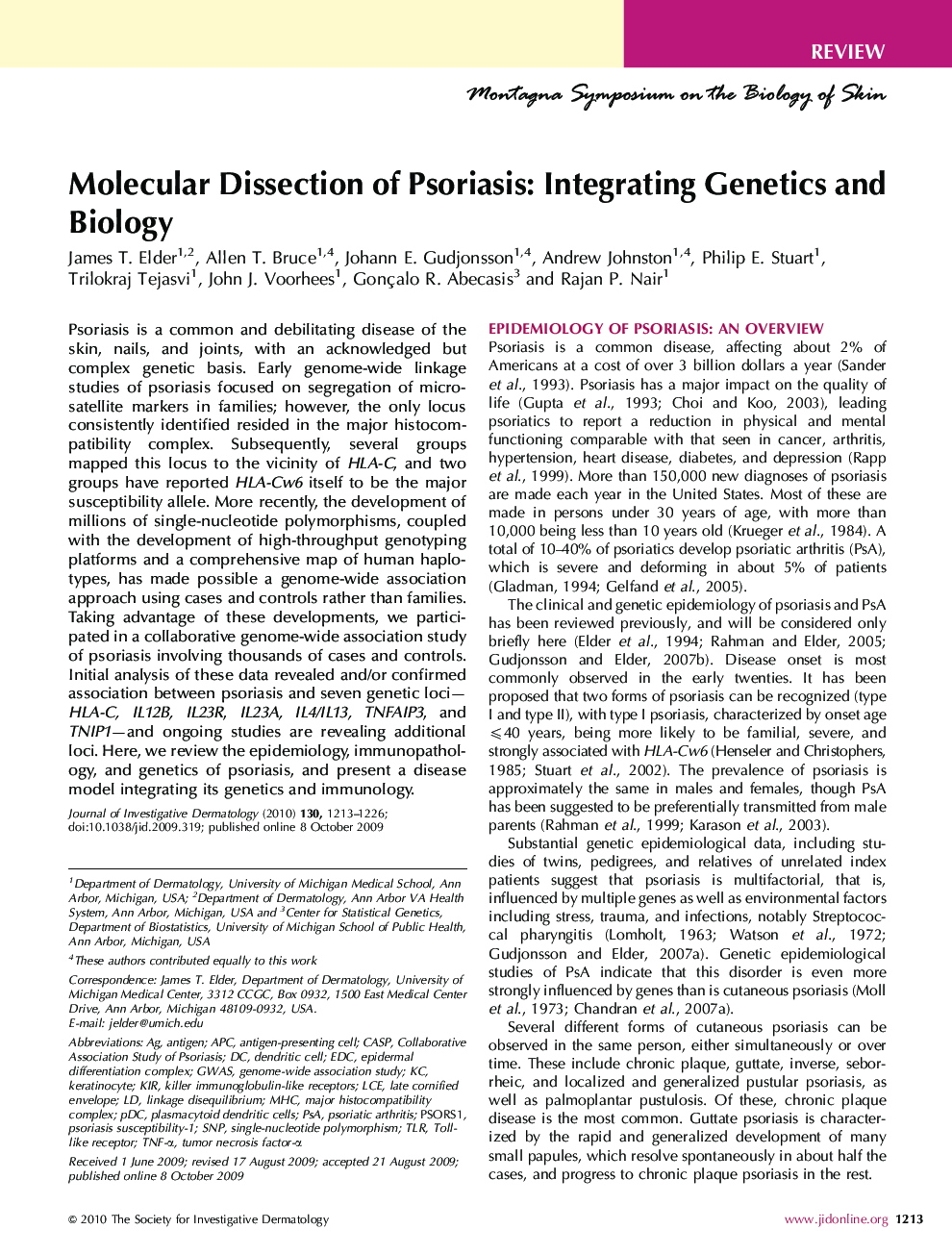| کد مقاله | کد نشریه | سال انتشار | مقاله انگلیسی | نسخه تمام متن |
|---|---|---|---|---|
| 3217085 | 1203592 | 2010 | 14 صفحه PDF | دانلود رایگان |

Psoriasis is a common and debilitating disease of the skin, nails, and joints, with an acknowledged but complex genetic basis. Early genome-wide linkage studies of psoriasis focused on segregation of microsatellite markers in families; however, the only locus consistently identified resided in the major histocompatibility complex. Subsequently, several groups mapped this locus to the vicinity of HLA-C, and two groups have reported HLA-Cw6 itself to be the major susceptibility allele. More recently, the development of millions of single-nucleotide polymorphisms, coupled with the development of high-throughput genotyping platforms and a comprehensive map of human haplotypes, has made possible a genome-wide association approach using cases and controls rather than families. Taking advantage of these developments, we participated in a collaborative genome-wide association study of psoriasis involving thousands of cases and controls. Initial analysis of these data revealed and/or confirmed association between psoriasis and seven genetic loci—HLA-C, IL12B, IL23R, IL23A, IL4/IL13, TNFAIP3, and TNIP1—and ongoing studies are revealing additional loci. Here, we review the epidemiology, immunopathology, and genetics of psoriasis, and present a disease model integrating its genetics and immunology.
Journal: Journal of Investigative Dermatology - Volume 130, Issue 5, May 2010, Pages 1213–1226